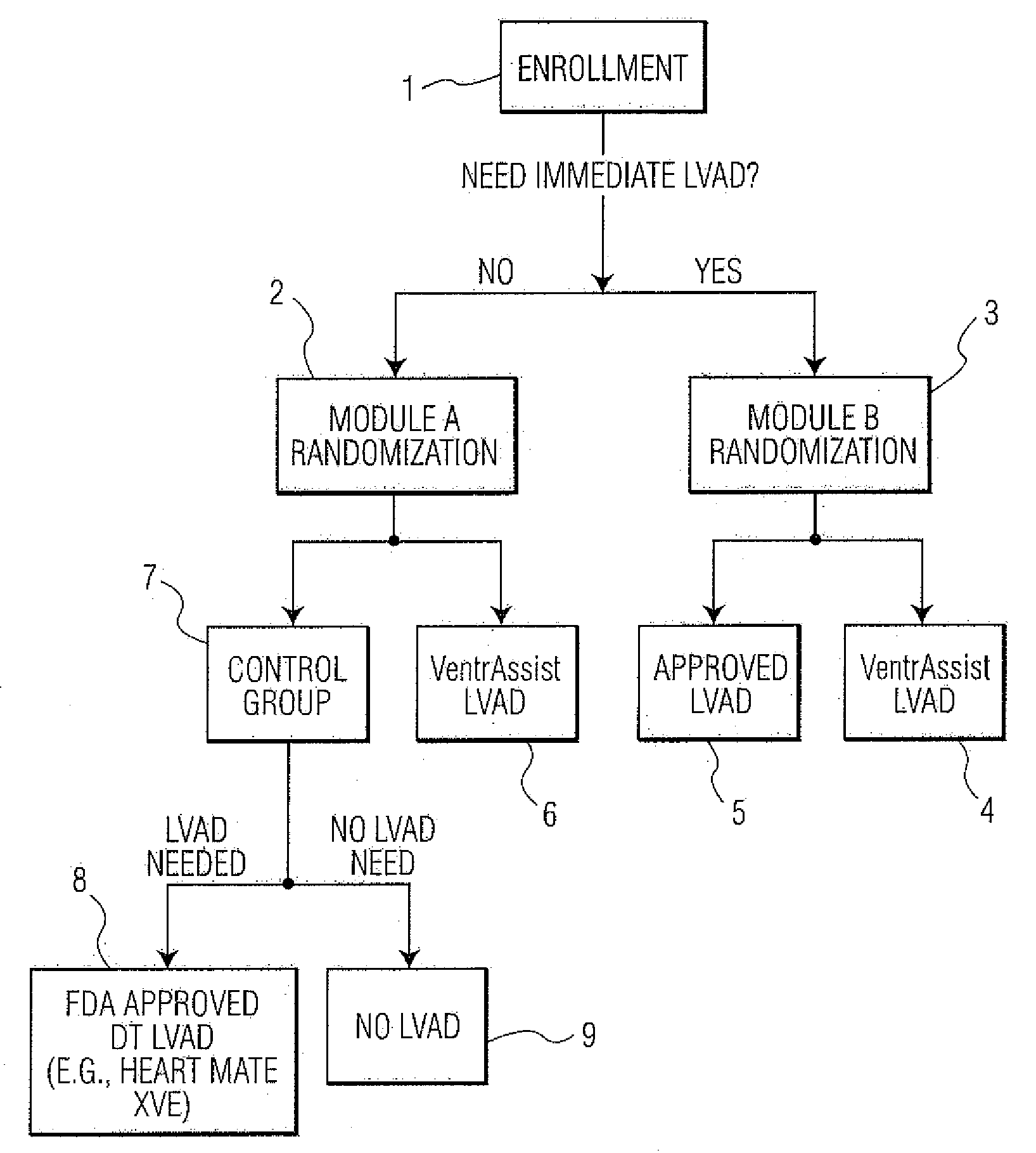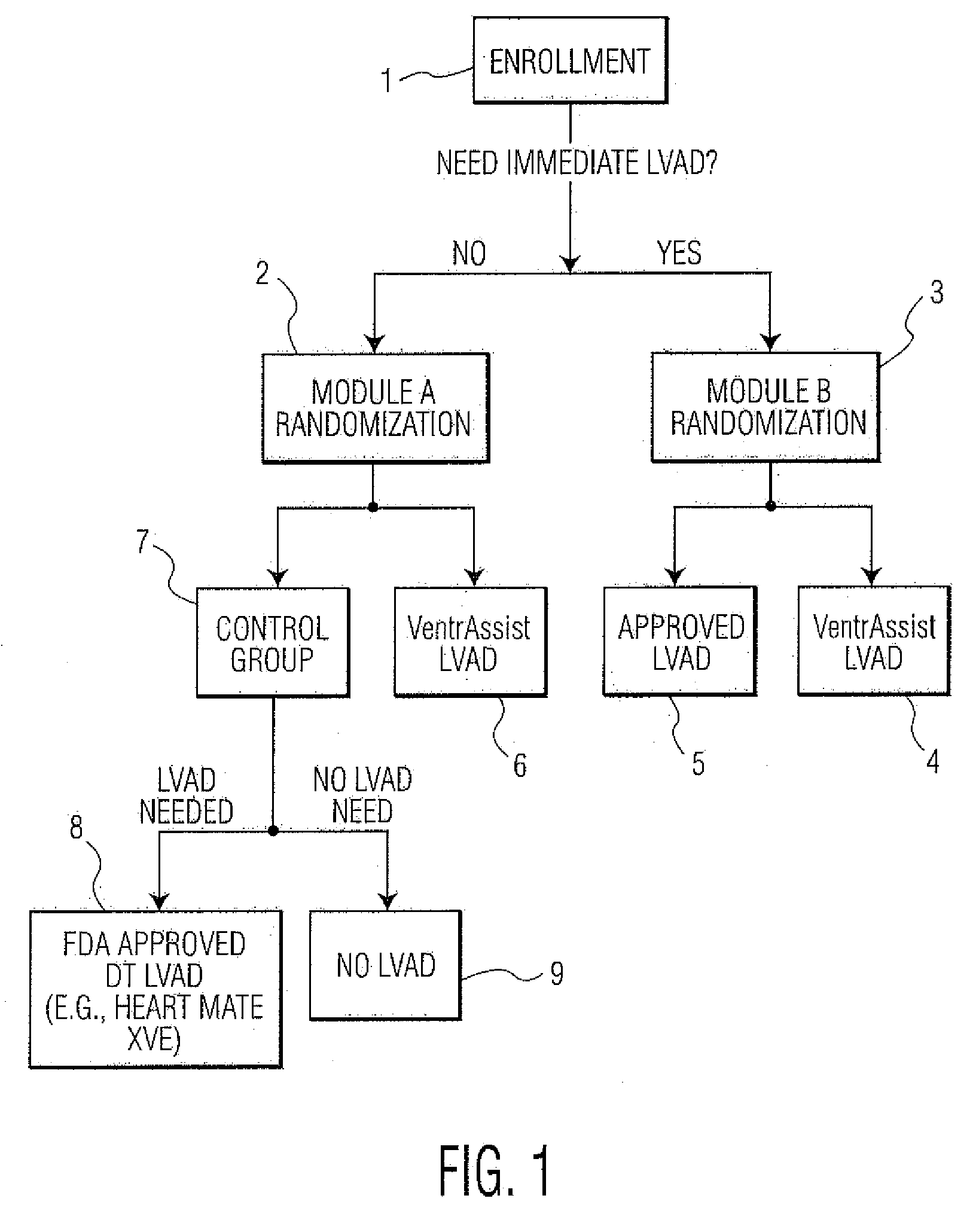Method of conducting a clinical trial
a clinical trial and clinical technology, applied in the field of clinical trial methods, can solve the problems of ethically impossible to provide non-functional (or “sham”) devices, difficult to meet the needs of patients,
- Summary
- Abstract
- Description
- Claims
- Application Information
AI Technical Summary
Benefits of technology
Problems solved by technology
Method used
Image
Examples
Embodiment Construction
[0053]FIG. 1 depicts an example of a method of conducting a randomized clinical trial in a preferred embodiment of the present invention. The clinical trial is for the purpose evaluating the effectiveness of an LVAD comprising an implantable rotary blood pump as described within U.S. Pat. No. 6,227,797—Watterson et al, which is called “VENTRASSIST® LVAD” throughout this specification, where “VENTRASSIST®” is a registered trademark of Ventracor Ltd, a company registered in Australia. The description of this device from the aforementioned US patent is incorporated within this specification. As will be understood, in other embodiments, other medical devices, such as other LVADs, mechanical hearts, right ventricle assist devices (RVADs) and so on could be evaluated.
[0054]The trial begins with the selection of a number of patients meeting the Inclusion Criteria for the trial. Please note that persons skilled in the art will appreciated that other sample sizes are possible and within the ...
PUM
 Login to View More
Login to View More Abstract
Description
Claims
Application Information
 Login to View More
Login to View More - R&D
- Intellectual Property
- Life Sciences
- Materials
- Tech Scout
- Unparalleled Data Quality
- Higher Quality Content
- 60% Fewer Hallucinations
Browse by: Latest US Patents, China's latest patents, Technical Efficacy Thesaurus, Application Domain, Technology Topic, Popular Technical Reports.
© 2025 PatSnap. All rights reserved.Legal|Privacy policy|Modern Slavery Act Transparency Statement|Sitemap|About US| Contact US: help@patsnap.com



